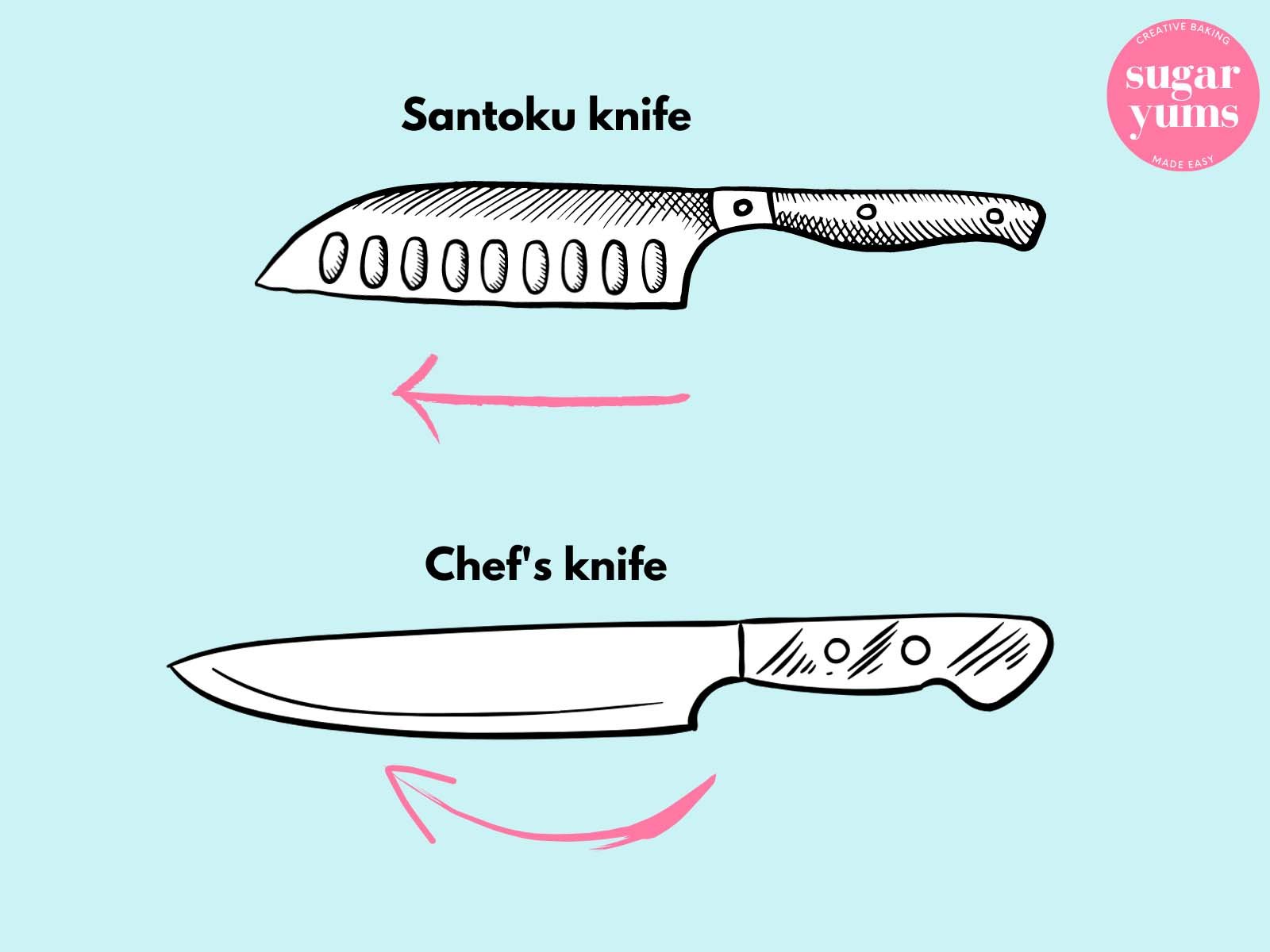An honest review of the Katto Santoku knife. Lightweight, sturdy and extra sharp, this knife is very versatile.
Disclaimer: this product was gifted and all opinions in this post are entirely my own.

If you’re a big foodie and love cooking, you’ll know how important it is to have the right tools. Getting good quality kitchen tools can make your life much easier and reduce your prep time quite a lot.
When making everyday meals, the most important tool is definitely a sharp and reliable kitchen knife. A good kitchen knife can save you a lot of time when prepping ingredients, making the cooking process more enjoyable.
I’ve recently been gifted a Santoku knife made by Katto, a British company. This post is an honest review of my experience using the knife for professional recipes and for daily cooking.

What is a santoku knife?
Santoku is a type of general use kitchen knife originating in Japan. Its blade is typically between 5 to 8 inches in length, with a flat edge.
In Japanese Santoku bocho (三徳包丁) translates to ‘three uses’, depicting the knife’s multi-purpose use, namely for chopping, cutting and dicing. This type of kitchen knife is commonly used to handle most ingredients, but especially meat, fish and vegetables.
A Santoku knife is recognisable through its shape. The blade is usually flat and designed to cut through in a single downward motion from heel to tip. This is unlike a typical chef’s knife, which relies more on a rocking motion.

In order to achieve perfect cuts every time, a santoku needs to have a thinner blade that a chef’s knife. This is why it’s generally better for use on softer produce, like vegetables or poultry. It does not handle hard ingredients, such as bones or tough roots, as well as a chef’s knife.
In my opinion a santoku knife is much more suitable for home cooks. It’s smaller in size than a chef’s knife and more lightweight. This makes it easier to handle and use for an extended time.
Katto Range
Katto is a British company that was founded in 2018. They specialise in high quality knives, but also make other nifty kitchen tools. From kitchen tools, to grill tools, chefs press, oyster knives, pasta boards and dough scrapers, Katto place strong emphasis on quality.
Since we’re covering kitchen knives in this post, I will be focusing more on their knife range. Katto offer Chefs knives, Santokus, utility knives and bread knives. Prices range from £95 ($110) to £125 ($145), depending on the chosen handle finish and scabbard.
All their products showcase attention to detail and high quality materials. Although slightly more expensive than regular range knives, Katto knives are built to last. The company also offers free knife sharpening for their clients, which maintains the products’ performance.

Katto Santoku Knife performance
I wanted to test the Katto Santoku knife properly before reviewing it, so I have tried it on multiple recipes. Here’s my overview on its performance:
- Lightweight: Despite feeling sturdy, the Katto Santoku is much more lightweight than most of my other knives. The blade is thin yet robust, so it can handle more intense jobs like cutting through sweet potatoes or squash. But it can also handle delicate jobs like fine slicing and dicing.
- Good size: I sometimes find chef’s knives difficult to use on everyday cooking. The Katto Santoku knife is smaller in size at 7.5 inches in blade length. This makes it easier to handle, even more less experienced cooks.
- Nicely weighted blade: Although the blade is quite thin, it has a nice weighted feel to it. This makes cutting easier, as the knife is more balanced.
- Very sharp: The Katto Santoku surprised me with how sharp it actually is. It cuts through most vegetables like slicing through butter. I do have to caution: pay extra attention to your fingers and always use the ‘bear claw’ when cutting.
- Comfortable handle: The handle is made from high quality wood, in a natural finish. It’s smooth, yet not slippery and has a good shape for holding. I opted for the walnut handle, as I like the colour best.
- Classy timeless looks: The knife boasts a rustic look to it, and feels very authentic. The Japanese blade AUS-10 is made from steel and has a textured finish, with a charcoaled top.
You can also opt to buy a leather pouch for your knife, which I strongly recommend. If your kitchen drawer is like mine, packed with a lot of tools, then you want to protect the knife with a pouch. The Katto leather scabbard is very rustic in feel, made out of thick leather.

Verdict
I’ve had the Katto Santoku knife for a little over a week and have tested it on multiple recipes and different types of ingredients. Overall, I am happy with its performance and quality and would gladly recommend it to my friends.
The price point is not exactly low, as I’d place it somewhere in the upper middle range. With santoku knives ranging between 50 to 200, the Katto Santoku seems reasonable for its quality. Although it’s an investment, its quality is superior to cheaper knives.
Lastly, I can’t attest to the knife’s longevity and performance over time, as I haven’t had it for a long time. But my best hunch is that if cared for properly, this Katto knife will last through the years.
Find out more about Katto knives by clicking the link.
Edit: The top part of the knife, although very aesthetic, seems to be untreated against rust. This is a big downside in my opinion, because if left wet, the top part of the knife rusts very quickly. So to prevent against this, wash and dry the knife immediately after use.




Leave a Reply